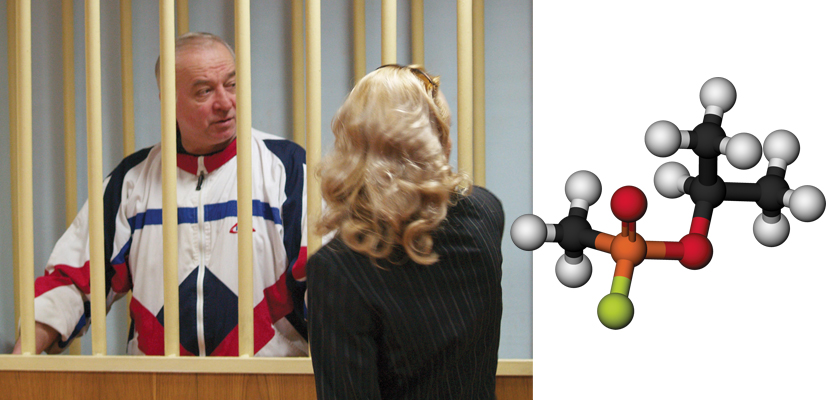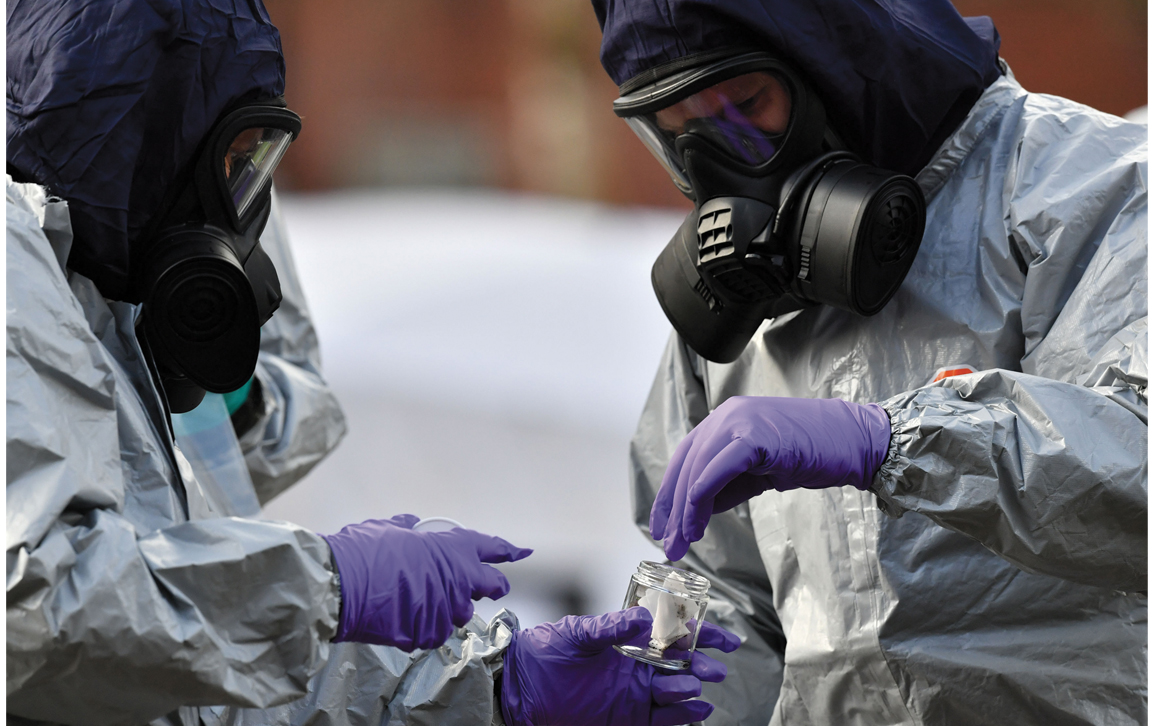Nerve Agents: What Are They and How Do They Work?
By Simon Cotton
These toxins were first discovered by accident in the 1930s during research on agricultural insecticides.
These toxins were first discovered by accident in the 1930s during research on agricultural insecticides.

The former Russian spy Sergei Skripal and his daughter are still in critical condition (at the time of publication) in a hospital in Salisbury in the United Kingdom, following exposure to an unknown nerve agent. Several locations in the city have been cordoned off and decontaminated since the pair were found unconscious on a park bench on March 5. But what are nerve agents exactly, and how do they affect the body?
The first nerve agents were invented by accident in the 1930s when researchers were trying to make cheaper and better alternatives to nicotine as insecticides. In their search, German scientists made two organic compounds containing phosphorus that were very effective at killing insect pests. However, they soon discovered that, even in minuscule amounts, the substances caused distressing symptoms in humans exposed to them.

ITAR-TASS News Agency/Alamy (left); Wikimedia Commons (right)
The two substances—too toxic to be used as commercial insecticides in agriculture—became known as tabun and sarin. The research was handed over to the Wehrmacht (the Nazi armed forces), which evaluated the substances as weapons and began constructing plants to manufacture them. The sarin plant was not operational by the time the Third Reich collapsed, when it fell into the hands of Soviet forces that overran Poland and Germany.
Pesticide research continued after the war, and a molecule known as VX was first made in an Imperial Chemical Industries (ICI) laboratory in the United Kingdom in 1952. It proved too toxic to be used in agriculture and was passed to the Porton Down chemical weapons research center, and subsequently to the U.S. government, when the United Kingdom renounced chemical weapons. The destructive power of VX became clear on March 13, 1968. Somehow, the substance escaped from the army’s chemical weapons proving ground and killed more than 3,000 sheep grazing 27 miles away in the Skull Valley area of Utah.
Since then, other nerve agents have been developed, but much less is known about them, although they are thought to work in broadly the same way. Unlike street drugs, nerve agents cannot be made in your kitchen or garden shed, on account of their toxicity, even in tiny amounts. Synthesis of nerve agents requires a specialized laboratory with biosafety cabinets.
Nerve agents are not thought to have been deployed until the 1980s. Saddam Hussein’s Iraqi forces are understood to have used sarin during the Iran-Iraq war, notably against Kurdish citizens in Halabja in March 1988, leaving an estimated 5,000 dead. On March 20, 1995, members of the Japanese Aum Shinrikyo cult used umbrellas with sharpened tips to puncture plastic bags and boxes containing sarin while they were travelling on the Tokyo subway system. Fortunately, the sarin used was impure, otherwise the casualty list would have been much longer. As it was, 13 people died and several thousand got sick.
Although there were claims that VX was used during the Iran-Iraq war, until recently, the only known human fatality caused by VX occurred when two members of the Aum Shinrikyo cult used VX to assassinate a former member of their sect in Osaka in 1994.
Two young women, an Indonesian and a Malaysian, are currently on trial in Malaysia, charged with killing Kim Jong-nam, the half brother of Kim Jong-un, North Korea’s leader, allegedly by smearing VX nerve agent across his face in an airport in Kuala Lumpur in 2017.
Nerve agents can be absorbed through inhalation or skin contact. In fact, when the Nazis were building their first nerve agent plant, some workers wearing protective suits died in agony because nerve agent got through gaps in their suits.

Ben Birchall/PA Wire/PA Images
Unlike traditional poisons, nerve agents don’t need to be added to food and drink to be effective. They are quite volatile, colorless liquids (except for VX, which is said to resemble engine oil). The concentration in the vapor at room temperature is lethal. The symptoms of poisoning come on quickly, and include chest tightening, difficulty breathing, and very likely asphyxiation. Associated symptoms include vomiting and massive incontinence. Victims of the Tokyo subway attack were reported to be bringing up blood. Kim Jong-nam died in less than 20 minutes. Eventually, victims die either through asphyxiation or cardiac arrest.
Unlike street drugs, nerve agents cannot be made in your kitchen or garden shed; they are toxic even in tiny amounts.
The chemicals work by disrupting the central nervous system. The body uses a molecule called acetylcholine to send messages between cells—when an acetylcholine molecule arrives, it causes an electrical impulse to be sent. The body constantly has to remove those acetylcholine molecules from the receptors; otherwise there would be a dangerous build-up. It uses an enzyme called acetylcholinesterase to do that. However, a nerve agent stops acetylcholinesterase from doing its job.
Antidotes do exist, one of which is called atropine, but they have to be administered quickly, or the effect of the nerve agent cannot be reversed. Some antidotes can be administered as prophylactics to troops about to go into battle if there is a risk of nerve agents being employed. This need for quick antidote administration is obviously a serious problem in a civilian situation, where there is no expectation of encountering these chemicals.

Matt Dunham/AP Images
We do not yet know with certainty which specific nerve agent poisoned Skripal. Although they all work in similar ways, different approaches may be needed for decontamination. To decontaminate streets and other hard surfaces, you can use water to flush the chemical out—making sure to use enough to properly dilute it. This approach works well for the more volatile sarin, which tends to evaporate easily or to get broken down slowly by moisture. However, other substances, such as VX, are less volatile and reactive. In that case, bleach and alkali can be used to break the molecules down. In a situation where we don’t know which has been used, a mix of water and bleach may be the best approach.
As more details emerge from the case, we’ll know more about the precise substance used and hopefully how it should be tackled. No matter the outcome, nerve agents are horrendously lethal and chemical warfare is an obscene use of chemicals.
Click "American Scientist" to access home page
American Scientist Comments and Discussion
To discuss our articles or comment on them, please share them and tag American Scientist on social media platforms. Here are links to our profiles on Twitter, Facebook, and LinkedIn.
If we re-share your post, we will moderate comments/discussion following our comments policy.